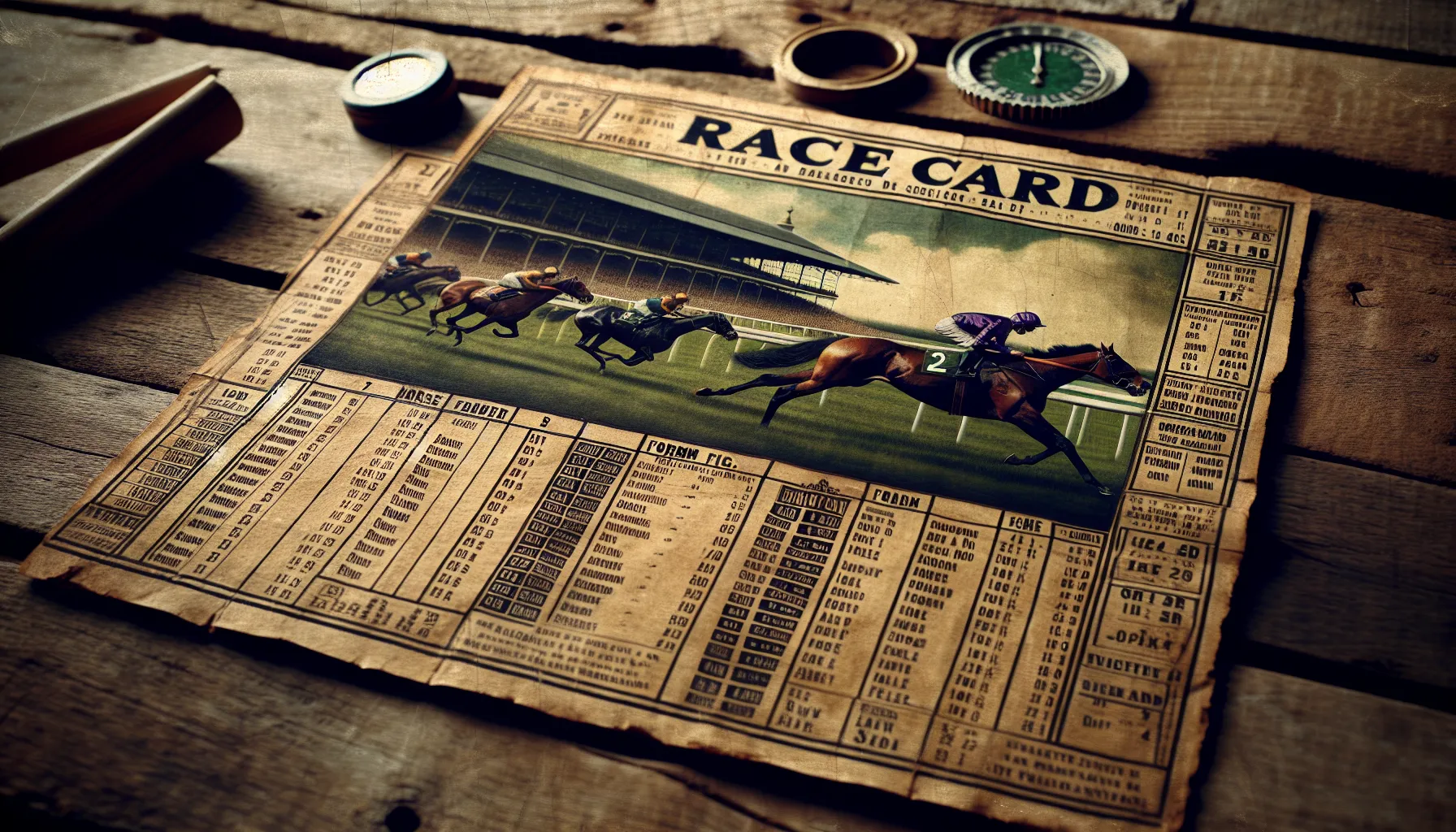Horse racing in the UK is more than just a sport; it’s a centuries-old tradition that combines strategy, skill, and excitement. Whether you’re a seasoned bettor or a curious newcomer, understanding how to study horse racing can give you an edge and make the experience even more rewarding.
From analyzing form guides to evaluating track conditions and jockey performance, there’s a lot to consider before placing a bet. By breaking down the essential factors and learning how to interpret key information, you’ll be better equipped to make informed decisions and enjoy the thrill of the races with confidence.
Understanding Horse Racing In The UK
Horse racing is deeply rooted in the UK, with its distinct traditions and structures forming a significant part of its appeal. Developing a thorough understanding of its key elements and race types can greatly enhance your ability to analyze and engage with the sport.
Key Elements Of Horse Racing
Several factors influence horse racing outcomes, and understanding these ensures better judgment.
- Form Guides: Detailed records of a horse’s past performances. Look for trends such as past wins in similar conditions or consistency in recent results.
- Track Conditions: The surface type and weather impact race performance. A soft track might favor certain horses, while a firm surface benefits others.
- Jockey Performance: Evaluate previous wins, pairing history with the horse, and experience on particular tracks. Skilled jockeys often influence races significantly.
- Trainer Stats: Check the trainer’s success rate, recent form, and specialty in specific race types. Well-trained horses tend to perform consistently.
- Race Classifications: Races are sorted by class based on quality, which affects competitiveness. Higher-class races feature better horses and jockeys.
Types Of Horse Races In The UK
The UK features diverse race categories, each demanding specific analysis and strategies.
- Flat Racing: Contested over a set distance without obstacles. Pay attention to speed, stamina, and track adaptability in flat races.
- National Hunt Racing: Involves jumping hurdles or fences. Assess horses based on jumping ability, endurance, and experience in this discipline.
- Handicap Races: Weights assigned according to the horses’ abilities aim to equalize chances, making the assessment of weight adjustments critical.
- Maiden Races: Restricted to horses without prior wins; identifying potential based on breeding and training is necessary.
- Group and Listed Races: These are high-level races with stringent entry requirements. Research top-tier competitors and the form of elite horses.
Every element and race type in UK horse racing combines to create a dynamic sport requiring both knowledge and strategic insight from participants.
Researching Horses And Jockeys

Effective research into horses and jockeys is essential for making informed decisions in UK horse racing. Understanding their performance histories and skill levels can significantly improve your strategic approach.
Analyzing Horse Performance And Form
Focus on identifying patterns in a horse’s race history. Examine the horse’s recent finishes, paying attention to its positions over the last 3-5 races. Check for consistency or improvement in performance. Prioritize form guides, which detail previous race results, track conditions, and performance ratings. Look for horses that perform well under similar circumstances, such as the same race distance, going type, or competition level.
Evaluate fitness levels through the time intervals between races. A horse racing too frequently or coming off a long break might underperform. Incorporate sectional times, where available, to assess stamina and speed bursts during races. Consider its track record at specific venues, as certain horses excel on particular surfaces or layouts.
Evaluating Jockey Skills And Experience
Study the jockey’s winning record over the past season or year. Focus on win-to-ride ratios to assess consistency. Experienced jockeys often build a strong rapport with horses they ride regularly, enhancing performance. Investigate specific combinations where a jockey repeatedly rides a horse with success.
Review the jockey’s preferred race types and track locations. Some jockeys excel in specific conditions, such as tight turns or long straights. Compare their performance across different race classes to gauge their ability to handle high-pressure events. Rider changes can also signal strategic decisions by trainers, indicating confidence in the jockey’s expertise for a particular race setup.
Interpreting Racecards And Statistics

Racecards and statistics provide essential insights into horse racing analysis. Understanding these details can improve your ability to predict outcomes and enhance your overall betting strategy.
Decoding Racecard Details
Racecards display critical information about each race, horse, jockey, and trainer involved. Key elements include:
- Horse Name and Number: Identifies each horse in the lineup. Use this to cross-reference performance data.
- Form Figures: Shows the horse’s recent finishes, typically its last 5–6 races. Numbers indicate placements, while “P”, “U”, or “F” signal pulled up, unseated rider, or fall, respectively.
- Weight: Reflects the total weight the horse carries, including the jockey and additional allowances. Higher weights may impact stamina, especially on demanding tracks.
- Jockey and Trainer Names: Lists the individuals responsible for riding and training the horse. Research their success rates to evaluate their competence.
- Track and Distance: Indicates race location and length. Some horses show a preference for certain tracks or distances, often detailed in form guides.
- Going Preference: Represents the horse’s performance on different ground conditions, such as “Good to Firm” or “Soft”.
- Age and Rating: Shows the horse’s age and official rating, which reflects skill level. Compare these ratings to identify well-matched competitors.
Understanding Betting Odds And Trends
Betting odds and trends highlight market expectations and help you identify potential value bets. Important factors include:
- Odds: Express the probability of a horse winning. For example, 5/1 odds imply a 1 in 6 chance. Shorter odds indicate favorites, while longer odds suggest riskier bets with higher potential returns.
- Market Moves: Observe fluctuations in odds before race time. Significant changes often suggest insider confidence or new information.
- Place Terms: Refer to how many places are paid for each-way bets. For instance, a race with 8–15 runners typically pays 1st, 2nd, and 3rd.
- Betting Trends: Identify trends like consistent odds shortening for certain horses or backing patterns tied to specific trainers or jockeys.
- Overround: Measures bookmakers’ profit margins. A lower margin often offers better value for bettors.
Analyzing racecards alongside betting trends can equip you with the tools to make well-informed decisions during UK horse racing events.
Studying Track Conditions And Weather

Understanding track conditions and weather is essential when analyzing UK horse racing. Both factors directly impact horse performance and race outcomes, making them critical components of your research.
Impact Of Track Types On Results
Track types in the UK include turf, all-weather, and artificial surfaces, each influencing results differently. Turf tracks, common in UK horse racing, vary in firmness and are affected by weather, with classifications ranging from “firm” to “heavy.” Horses often perform better on specific turf conditions based on their running style or past success. All-weather tracks, such as Polytrack or Tapeta, provide consistent footing and are less influenced by rain, favoring horses accustomed to these surfaces. Artificial surfaces increase reliability but may disadvantage horses specialized for natural turf. Studying a horse’s past performances on these track types helps predict outcomes.
How Weather Influences Horse Racing
Weather alters track conditions and horse performance significantly. Rain can soften turf tracks, creating “soft” or “heavy” going, which favors horses proven to handle those conditions. Dry weather hardens the ground, resulting in “good” or “firm” conditions, suiting speedier runners. Wind impacts pace, with horses at the front experiencing resistance while those drafting behind conserve energy. High temperatures may affect horse stamina, particularly in longer races. Reviewing weather forecasts and aligning them with a horse’s historical success in similar situations provides actionable insights for betting or predictions.
Building A Strategy For Studying Horse Racing
Building an effective strategy enhances your ability to analyze UK horse racing and make informed decisions. Focus on historical data and personal tracking to refine your approach systematically.
Using Historical Data To Predict Outcomes
Analyzing historical data reveals patterns and trends influencing race outcomes. Review a horse’s past performance across similar conditions, including track type, going preference, and race distance. Identify consistent performers in specific weather and track scenarios by studying race records.
Evaluate jockey and trainer histories, focusing on win percentages and performance within specific race types. For instance, examine a trainer’s success in handicap races or a jockey’s performance on various racecourses. Use official ratings and speed figures to compare horses under structured benchmarks, ensuring depth to your predictions.
Tracking Your Own Insights And Predictions
Maintaining records of your observations sharpens strategic accuracy. Document key details such as race results, conditions, and your predictions, comparing them regularly for recurring trends. Note specific factors such as horses excelling in softer goings or particular jockey-horse combinations proving successful.
Identify areas of improvement by analyzing discrepancies between projections and actual outcomes. Adjust your strategy by testing new variables or focusing on overlooked aspects, like sectional timings or draw biases, to continually refine your betting strategy in UK horse racing.
Conclusion
Mastering the art of studying horse racing in the UK takes time, effort, and a keen eye for detail. By diving into the various factors that influence race outcomes and honing your analytical skills, you can transform your approach to this thrilling sport. Whether you’re evaluating form guides, interpreting racecards, or analyzing track conditions, every piece of knowledge brings you closer to making smarter, more confident decisions.
With practice and persistence, you’ll not only enhance your betting strategies but also deepen your appreciation for the intricacies of UK horse racing.
Frequently Asked Questions
What is the significance of horse racing in the UK?
Horse racing is a deeply rooted tradition in the UK that blends skill, strategy, and excitement. It is a popular sport that attracts both betting enthusiasts and spectators, offering unique opportunities to analyze factors like form, track conditions, and jockey performance.
How can beginners approach horse race betting?
Newcomers should start by learning to read racecards, understanding betting odds, and analyzing factors like form guides, jockey skills, and track conditions. Building knowledge gradually will improve decision-making and enhance the experience.
What are the main types of horse races in the UK?
Horse racing in the UK includes flat racing, National Hunt racing (jumps), handicap races, maiden races, and group and listed races. Each type requires specific strategies for analysis.
Why are form guides important in horse racing?
Form guides provide detailed insights into a horse’s recent performance, consistency, and fitness. They help bettors identify patterns and make well-informed predictions about a horse’s chances in a race.
How do track conditions affect horse racing outcomes?
Track conditions—such as turf, all-weather, or artificial surfaces—play a significant role in horse racing. Horses often perform better on preferred surfaces or under specific weather conditions, such as soft turf after rain or firm ground during dry weather.
How does weather influence horse racing?
Weather impacts track conditions and a horse’s performance. Rain can soften turf, while dry weather creates firmer surfaces. Wind and temperature can also affect stamina and pace, making weather forecasts crucial for predictions.
What factors should bettors analyze about jockeys?
Bettors should evaluate jockey skills by reviewing their win-to-ride ratios, experience on specific tracks, partnerships with horses, and success in similar race types. These factors influence race outcomes significantly.
Can statistics and racecards improve betting strategies?
Yes, racecards and statistics provide essential information like horse names, form figures, weights, jockey and trainer stats, and betting odds. Understanding these details helps bettors make strategic and informed choices.
How do betting odds work in horse racing?
Betting odds represent the probability of a horse winning. They fluctuate based on market trends and bettors’ activities, offering insights into how the crowd perceives a horse’s chances.
Why should bettors track their insights and performance?
Tracking insights and results helps bettors identify patterns, evaluate past strategies, and improve future decision-making. Continuous analysis and refinement can lead to more accurate predictions over time.
How can historical data improve horse race predictions?
Historical data reveals trends and patterns, such as performances under similar track and weather conditions, past results with specific jockeys, and official ratings. Leveraging this data helps make more precise predictions.
Is researching trainers as important as analyzing jockeys?
Yes, trainers play a critical role in a horse’s performance. Reviewing their winning records, preferred race types, and horse preparation methods helps bettors evaluate a horse’s chances more comprehensively.
